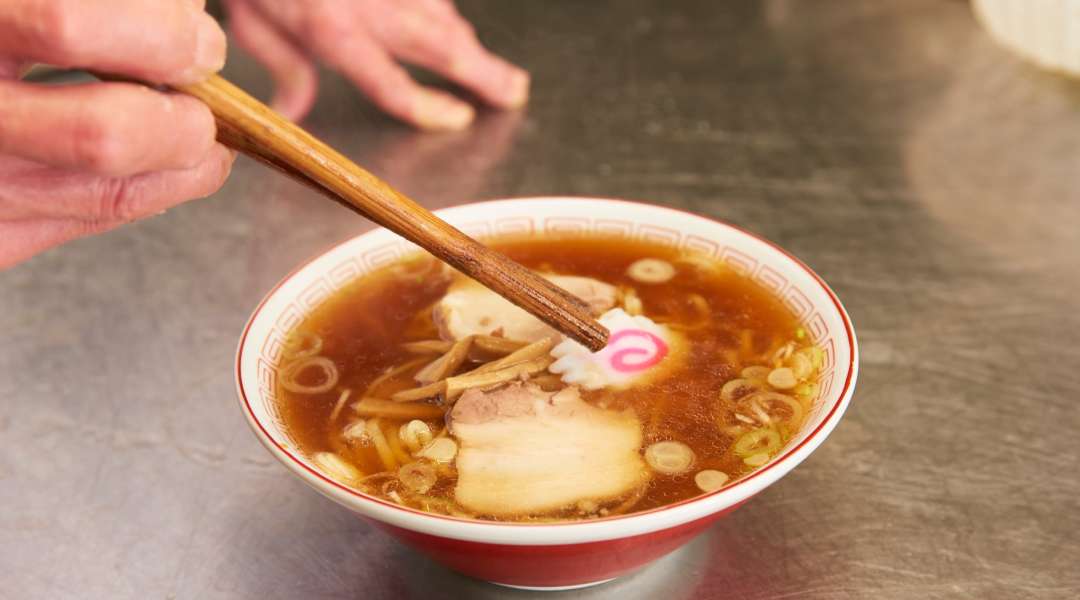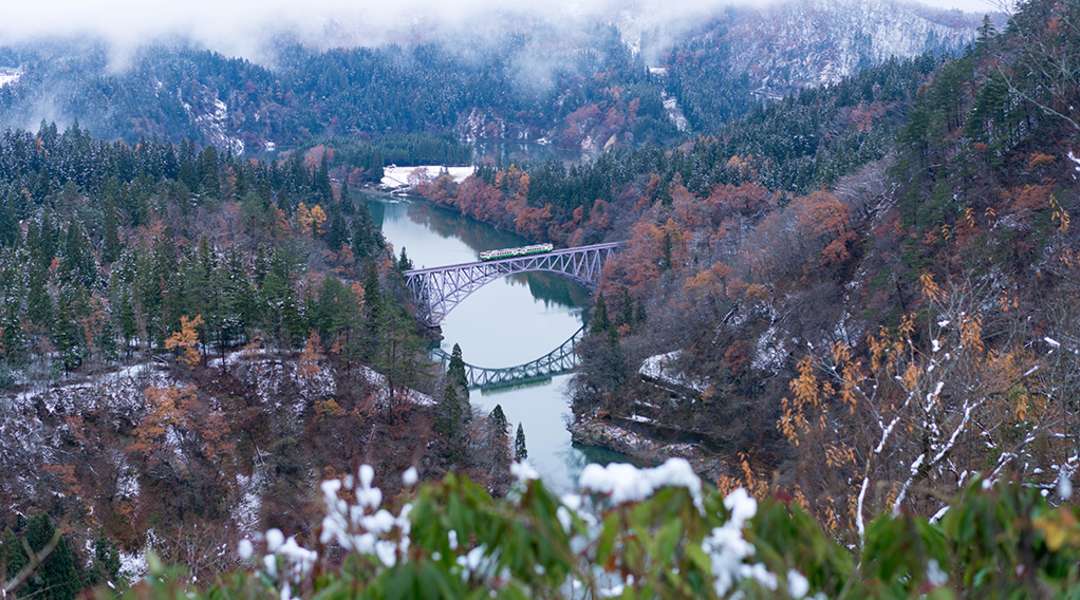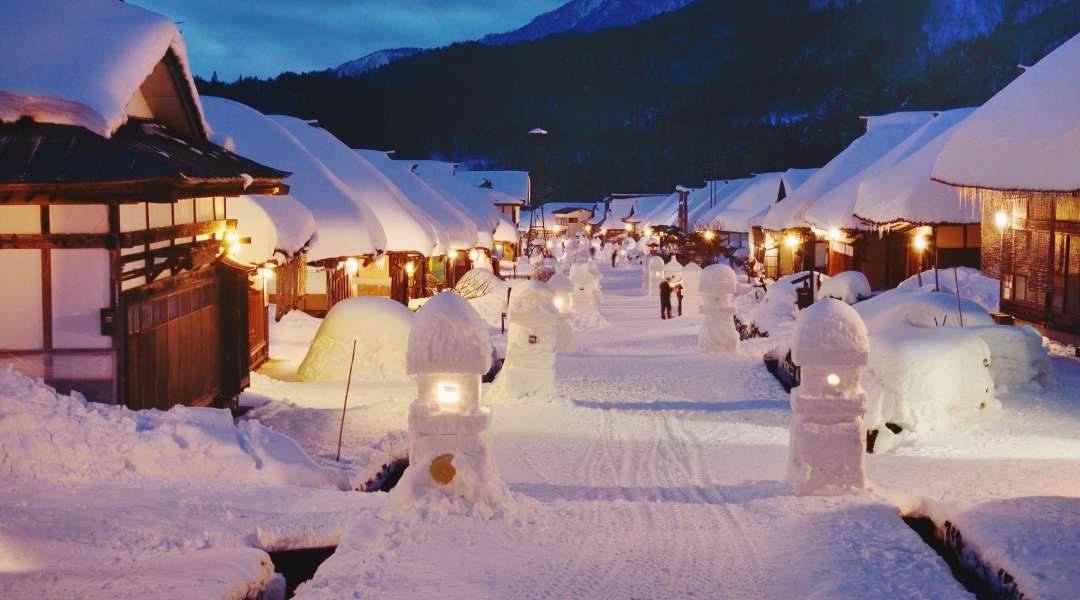Meet a Fukushima local
Zoe started working at the Fukushima Prefecture Tourism & Local Products Association in August 2016. Originally hailing from the UK, she has travelled extensively around the prefecture to gain a good knowledge of all the best places to visit, and, for a long time, ran a travel blog based on the concept of rediscovering Fukushima.
Nowadays, she shares information on Fukushima Prefecture via her office’s social media accounts and multilingual homepage (fukushima.travel). She also promotes the prefecture at international travel fairs, as well as liaising with international travel agents and tourism-related organizations, and occasionally being featured in international media! She works to give advice regarding welcoming international guests to local organisations related to tourism, through training sessions throughout the prefecture.
We asked her to share some of her top tips for newcomers to the region!
What is Fukushima all about?
The third biggest prefecture in Japan, Fukushima has a huge amount of variety. The climate, dialect, culinary traditions, culture, and history, differs from area to area. This is most evident during winter, when the eastern coastal region experiences rather mild temperatures, whereas the Aizu and Minamiaizu regions to the west find themselves deep in metres of snow. The prefecture, especially the Aizu region, has many links to the samurai era, with a lot of history and traditions still available to experience first-hand, even today.
Eating noodles in weird and wonderful ways

With Japanese dishes differing vastly by region, trying local cuisine is a must when travelling in Japan. One culinary experience which should be at the top of your list is Negisoba - a dish where you eat your soba noodles with a green onion, instead of chopsticks! Negisoba is unique to Ouchi-juku, an historical area of Fukushima Prefecture used during the Edo Period (1603 - 1868) as a post-town, where weary travellers would rest for the night.
The origins of Negisoba date back to the Edo Period when the lord of Aizu returned from a trip to Nagano prefecture, accompanied by a retainer who locals spotted eating soba noodles with a daikon radish. The retainer, a member of Nagano’s Takato clan, explained that he was observing a local custom. Soon, this practice became known throughout Aizu as “Takato soba”.
Over time, the owner of local restaurant ‘Misawaya’ came up with the idea of replacing chopsticks with green onion when serving soba (After all, the onion adds a great fragrance and texture to the dish). Over the years, the dish became popularly-known as ‘Negisoba’ (‘negi’ means ‘green onion’). Depending on the restaurant, Negisoba is sometimes served with an explanation that the entire green onion should be eaten, so as not to be wasteful... But Misawaya isn’t so strict!

While in the Aizu region, why not try another noodle-related cultural experience and have ramen for breakfast in Kitakata City? It’s thought that “Asara” - “Morning Ramen” - was traditionally eaten by farmers who got up at the crack of dawn, and by factory workers working late into the night, as a meal to refresh them after hours of hard work. The culture of eating ramen for breakfast has caught on, and it’s now one of the things Kitakata City is famous for. And with over 120 ramen shops to choose from, you’re really spoilt for choice!
Explore the only wooden double-helix structured building in the world

A truly hidden gem, Sazaedo Temple is unique in the world. Sazaedo Temple, completed in Aizu-Wakamatsu City in 1796, was built to house 33 Buddhist kannon statues. Having all 33 kannon statues in one location meant that local people didn’t have to make long pilgrimages to worship at 33 individual temples. Worshippers have been coming since the Edo Period, bringing with them personalized stickers, which would be stuck to the walls and ceiling to mark their visit, almost like a graffiti tag. To ensure that worshippers wouldn’t be bothered by passersby on their way out of the temple, Sazaedo was built as a double-helix staircase.
This means that the route visitors take to the top of the temple is completely different from the route back down. I’ve been to Sazaedo Temple over ten times and my mind still boggles at how it works! While a number of similar temples have existed in Japan over the centuries, Sazaedo Temple is the only remaining wooden building with a double-helix structure left in the world. Pretty cool, right?
Try a martial art in the land of the last samurai (Aizu-Wakamatsu)

For Japanese history buffs, Aizu-Wakamatsu City is the place to visit. The city was the setting for the epic final large-scale battle of the Boshin War in 1868, which ushered in the start of the Meiji Restoration, the rapid modernisation of Japan and the end of the samurai era. The Boshin War was a civil war between government forces wishing to centralize power, and those who remained loyal to the regional warlords of Tokugawa Shogunate.
Aizu was fiercely loyal to the Tokugawa Shogunate and the warlord system, which led to a drawn-out battle at Tsurugajo Castle. Although the war was lost, the people of Aizu keep certain aspects of the samurai culture alive, whether it’s the innate sense of right and wrong taught at schools, the sense of pride in local history, or the continued training in martial arts practiced by samurai.
Japanese archery is one of the martial arts practiced by samurai in Aizu, and you can try it yourself when you visit. Put your skills to the test at Aizu Hanko Nisshinkan, which is a faithful reconstruction of an Edo Period school where children would gain an exceptional level of samurai education recognised throughout Japan. You can also try Zazen meditation at Nisshinkan if you book in advance.
Take a scenic train ride to one of Japan's most beautiful villages (Mishima Town / Tadami Line)

The Tadami Line takes you on a scenic trip from the hustle and bustle of Aizu-Wakamatsu City deep into the sleepy countryside of Okuaizu region, and beyond. After getting off at Yanaizu Town for the magical Enzoji Temple, hop back on the train and continue to Mishima Town. Rated as one of Japan’s most beautiful villages, from its world-famous viewpoint to its relaxing onsen, Mishima Town has lots to explore. Mishima is also a town of historic craft techniques, which have been designated as Japanese Traditional Craft Properties. This tradition of producing woven everyday items dates back thousands of years. In more recent centuries, farmers have continued this practice as something to do (and sell) during long, snowy winter months. Try your hand at making woven crafts at the Traditional Craft Hall in town, or meet artisans from all over Japan at the annual Kojin Matsuri (“Artisans Market”) that Mishima Town hosts every June. I recommend renting an electric-powered bicycle from Mishima Town’s Tourism Association to get around town, and staying overnight at one of the town’s international tourist-friendly ryokan or guesthouses.
Meet some samurai on horseback at a one-of-a-kind summer festival (Soma Nomaoi)

There are a number of festivals across Japan that feature horses, but none have the scale, history, or sheer impressiveness of Soma Nomaoi, a three-day festival, which takes place every summer in the coastal cities of Soma and Minamisoma. This festival boasts a history of over a millennium, with the main events making up the festival schedule finding their roots in the horseback military training that even preceded Japan’s Warring States Period; in other words, pre-1467!
The highlight of the festival is its second day, which includes a procession of samurai clad in amazing armor on horseback through town, a thrilling horse race, and a competition whereby samurai on horseback must race to catch flag that are shot into the air with a cannon (think Quidditch, on horses).
One of the things I love most about this festival is the sense of local history, and knowing that those taking part are local people continuing a tradition of their ancestors. The festival engulfs the entire central town area, giving everywhere you go a buzz of excitement. Whether you’re watching the grandiose procession of samurai through the streets, gazing out to the racetrack in anticipation, or cheering on your favourite samurai as they reach for the elusive sacred flags, the atmosphere is unlike anything else.
Thank you very much for your time Zoe!
To stay up to date with all the latest happenings in Japan follow us on Facebook or Twitter.


















































